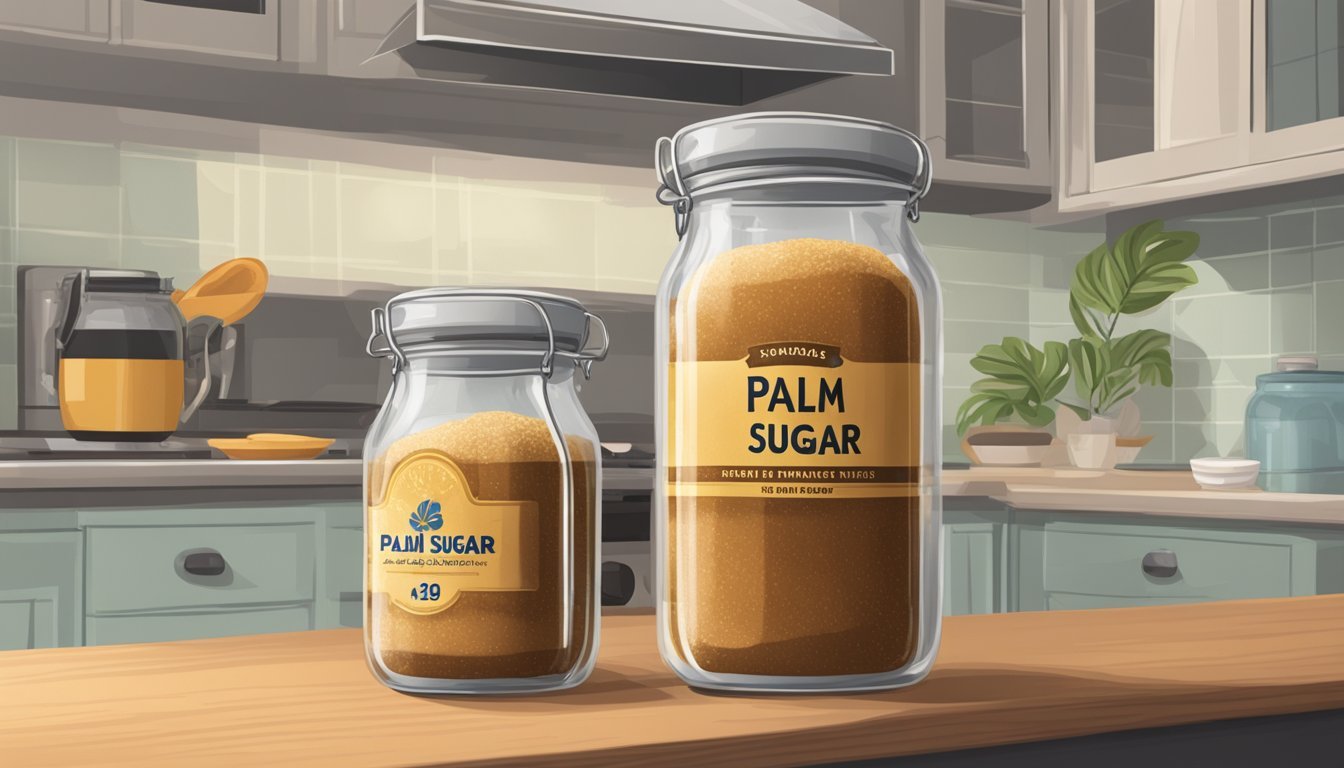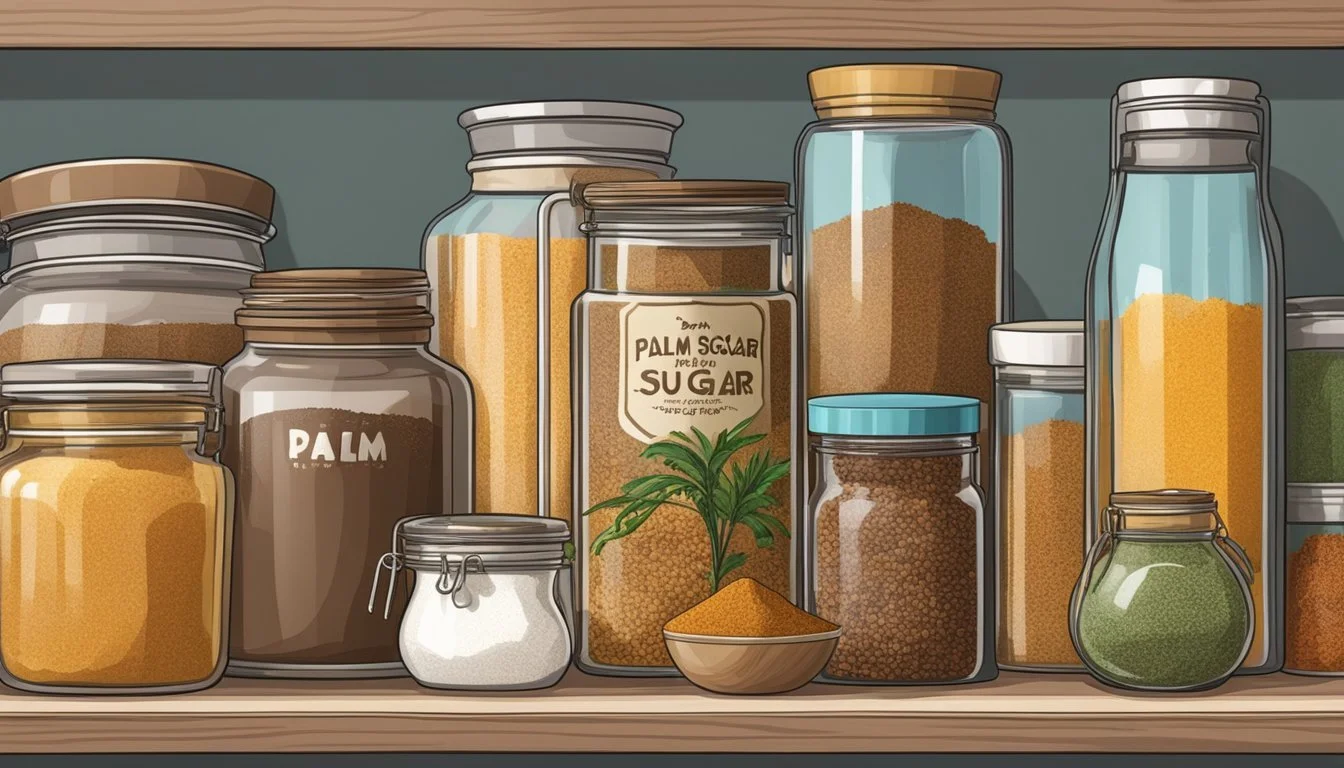How Long Does Palm Sugar Last?
Shelf Life and Storage Tips
Palm sugar, an unrefined sweetener, is widely prized for its unique caramel-like flavor and is harvested from the sap of various types of palm trees. Often employed in Southeast Asian and Indian cuisine, it lends a distinct richness to both sweet and savory dishes. Its granulated form, similar to that of brown sugar, raises the question of shelf life for consumers aiming to maintain its quality for cooking and baking applications.
In most cases, palm sugar has a commendable shelf life, lasting well if properly stored. Manufacturers often recommend using the product within two years of the purchase date to ensure top-notch flavor and consistency. While palm sugar does not spoil like perishable goods, it can harden or lose some of its delicate taste nuances over time. Storage conditions play a crucial role in preserving its sweetness and texture.
Palm Sugar Overview
Palm sugar is recognized as a natural sweetener derived from the sap of sugar palm and coconut palm trees. Unlike refined sugars, it retains its natural flavor and nutritional content.
Types of Palm Sugar
Coconut Palm Sugar: It comes from the sap of the flower bud stem of the coconut palm. Often used interchangeably with palm sugar, it is sometimes referred to as coconut sugar.
Sugar Palm Sugar (Jaggery/Gula Melaka): Produced from the sap of sugar palm trees, it has a darker color and richer flavor. This type of palm sugar is known as jaggery in India and gula melaka in parts of Southeast Asia.
Nutritional Content
Minerals: Palm sugar contains minerals such as iron, potassium, and zinc which are beneficial to health.
Vitamins: It provides a range of B vitamins contributing to its nutritional profile.
Being unrefined, palm sugar holds onto more of its natural vitamins and minerals compared to its refined counterparts. It is considered to have health benefits over traditional white sugar due to this retention of nutrients.
Shelf Life and Storage
Palm sugar has a substantial shelf life when stored correctly, with its quality and freshness being largely contingent on the storage environment.
Optimal Storage Conditions
To maximize the shelf life of palm sugar, it should be kept in an airtight container to prevent moisture intrusion which can lead to clumps. Proper storage conditions are a cool, dry place in the pantry or kitchen, ideally within a temperature range of 50°F to 77°F (10°C to 25°C). Controlling the moisture content in the storage environment is crucial as palm sugar is hygroscopic, meaning it readily absorbs moisture from the air.
Do:
Store in an airtight container.
Keep palm sugar in a cool, dry place.
Don't:
Expose to extreme temperatures.
Allow exposure to moisture.
Additionally, refrigeration is unnecessary and freezing is not recommended as it doesn't significantly extend the product's usability, and may contribute to texture changes.
Signs of Spoilage
Although palm sugar is less prone to spoilage than other food items, it is not immune to deterioration, particularly when improper storage occurs. Signs that palm sugar has gone bad include:
Presence of mold or bacteria.
Off odors indicating that it has gone rancid.
Clumps that do not dissolve upon breaking up, signaling moisture has compromised the sugar.
While palm sugar does not have an indefinite shelf life, it doesn't generally become unsafe to consume when it expires; however, its optimal flavor and quality can diminish over time. It's advisable to discard the sugar if one detects any of the spoilage signs above for safety and quality reasons.
Usage in Cooking and Baking
Palm sugar, known for its distinctive caramel-like flavor, has become a sought-after ingredient in cooking and baking. It contributes not just to the taste but also to the texture and quality of culinary creations.
Culinary Applications
Palm sugar is extensively used to enhance the flavor profile of various dishes. In cooking, it is a staple in Southeast Asian cuisines, often found in curries and sauces, lending a rich, deep flavor that is less sweet than cane sugar. In baking, palm sugar imparts a warm, caramel note that can elevate the taste of desserts and sweets. Chefs value it for its flavor consistency and the way it can subtly alter the texture of baked goods, giving them a satisfying crunch or chewiness.
Thai and Indian cuisine: Commonly used in curries and sauces
Desserts: Perfect for imparting a caramel-like quality to sweets
Flavor: Adds a deep, rich taste that is complex and less sweet than refined white sugar
Substitutes for Palm Sugar
While palm sugar holds a unique place in culinary applications, sometimes it may require a substitute. Brown sugar is a common alternative, offering a similar moisture content and a somewhat comparable caramel flavor. Maple syrup and honey can provide the syrupy consistency and natural sweetness, though they might alter the liquid balance in recipes, which could necessitate adjustments. If a granulated option is preferred, white sugar can be used, but it lacks the complex flavor and higher moisture content of palm sugar, potentially affecting the texture and richness of the dish.
Brown sugar: Similar moisture content; a decent stand-in for texture
Maple syrup/Honey: Liquid options that can replace the sweetness but may change recipe consistency
White granulated sugar: Easily accessible, but will not replicate the unique flavor profile
Health and Nutrition
Palm sugar, emerging as a healthier alternative to regular sweeteners, is appreciated for its low glycemic index. This section explores how it compares nutritionally with other sweeteners and what that means for blood sugar management.
Low Glycemic Index
Palm sugar is known for its low glycemic index (GI), which is a measure of how quickly foods raise blood sugar levels after eating. Reports suggest that palm sugar has a GI of 35, which is significantly lower than table sugar at 68 and even honey at 55. A low GI is beneficial as it implies a reduced risk of blood sugar spikes, potentially offering a more stable energy release and supporting blood sugar level management. This characteristic contributes to palm sugar's profile as a potentially better sweetening choice for individuals monitoring their blood sugar, such as those with diabetes.
Comparisons With Other Sweeteners
Unlike many sweeteners that are high in sucrose, palm sugar is valued as a natural sweetener and consists of a nutritional profile that includes a certain amount of inulin. Inulin is a type of soluble fiber that may improve gut health and potentially aid in managing heart disease. When comparing palm sugar's nutritional value to other sweeteners, it provides:
Approximately 15 grams of carbohydrates per tablespoon.
Around 15 grams of sugar per tablespoon.
Zero grams of fat, protein, or fiber.
The presence of inulin in palm sugar also contributes to it being considered part of a balanced diet when used in moderation. However, while palm sugar might excel as a healthier alternative with nutritional benefits, it should still be used sparingly in the same way one would approach any sweetener.
Cultural and Economic Significance
Palm sugar production and use is deeply interwoven with Asian culture and has significant economic implications, particularly in Southeast Asia. The sugar is a staple in Asian cuisine and represents a notable sector in the region's agricultural economy.
Palm Sugar in Asian Cuisine
In Asian cuisine, palm sugar is esteemed for its unique flavor profile, contributing a rich sweetness to a plethora of dishes. It is especially prevalent in Southeast Asia where it is a traditional ingredient in both sweet and savory recipes. Given its distinct caramel-like taste, palm sugar is often preferred over cane sugar in many Asian desserts. For instance, the Philippines are known for delicacies like kalamay, a sticky dessert sweetened predominately with palm sugar.
Production and Economy
The process of making palm sugar involves tapping the sweet sap from a variety of palm trees, such as the sugar palm and coconut palm. This sap, also referred to as toddy, is then boiled until it thickens and solidifies into sugar blocks or granules.
Production Steps Description Tapping Collecting sap from the inflorescence of palm trees. Boiling Heating the sap to evaporate water content. Solidifying Cooling and allowing the thickened sap to crystallize.
Philippines and Indonesia are among the top producers, making palm sugar a vital contributor to their economies. It offers employment to rural communities and is an essential export of these nations. Despite modern advancements, the production remains labor-intensive, yet, its popularity in both local and global markets sustains demand.
Practical Tips and Tricks
Properly stored palm sugar can last quite long. This section offers precise tips for handling clumpy sugar and keeping track of its freshness.
Dissolving and Using Clumpy Palm Sugar
Palm sugar can develop clumps over time due to moisture absorption. To use clumpy palm sugar, one can dissolve it in a small amount of water. Apply gentle heat—either on the stovetop or in the microwave—until it's fully dissolved into a paste. This paste can then be easily incorporated into recipes.
Stovetop Method:
Place clumpy palm sugar in a pan.
Add a minimal amount of water.
Heat gently, stirring until dissolved.
Microwave Method:
Combine palm sugar and water in a microwave-safe bowl.
Heat in short bursts, stirring in between until fully dissolved.
For a more granulated texture, one might process the sugar in a food processor before or after the dissolving method if the recipe calls for it.
Labeling and Tracking Freshness
Keeping track of when palm sugar is boiled down and stored can prevent it from going bad. One should label the container with the date it was stored. Ensuring the container is opaque and tightly sealed can also help maintain color and quality.
Labeling Tip: Use a permanent marker to write the storage date on a piece of tape, then stick it to the container.
Storage Conditions:
Keep in a cool, dry place.
Use an airtight container to prevent moisture ingress.
Adhering to these practices ensures the palm sugar retains its characteristics and is less likely to develop clumps or alter in color.





